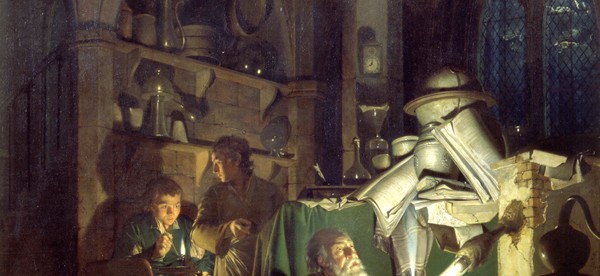It Starts with P

If you’ve never heard the name Hennig Brand, well, don’t worry about it. He’s not a household name and, by and large, wasn’t highly thought of when he was alive. We’re not really sure about the key details of his life — Wikipedia says he was born in or around 1630 and died either in 1692 or 1712, and then contradicts itself by saying that “the circumstances of Brand’s birth are unknown but he was born in 1630 and died in 1710.” Some sources say he grew up poor, others say he grew up rather well off — it’s all a bit of a mess. But ultimately, it’s unimportant. What’s important is something everyone agrees upon:
Hennig Brand collected urine.
Yes, pee. Vats of it. Perhaps as much as 1,500 gallons. But don’t worry! He had a very good reason. Hennig Brand was looking for the alchemist’s dream: the philosopher’s stone.
That sounds weird to those of us living in the 21st century, but those were different times. Alchemy — particularly the search for a way to transmute metals into gold — was still a common (albeit ill-fated) discipline. Brand, perhaps because of the yellow-ish hue of pee, believed there was something in our urine which would help him crack the code. So, he got to collecting, particularly desiring the urine of people who had just drunken beer. (Theirs, he observed, was very yellow.) And then, as an NPR reporter so appropriately summarized, “I’ll spare you the rest — it involved lots of boiling and cooking and waiting.”
Brand’s experiment failed. The resulting solids did not yield anything which could magically transmute metals. Instead, Brand ended up going broke.
Temporarily.
As it turned out, Brand ended up with something else — “a white, waxy substance that glowed in the dark,” per NPR. That’s pretty neat, even if the process to get it is gross. Brand named his discovery after the Greek term for “light bearing,” or “phosphorus,” which is what we call it today.
And it turns out, phosphorus is pretty valuable. Today, it’s used for matches, explosives, and in less destructive ways as an important element in fertilizer, but it was valuable was back in Brand’s day, too, as a curiosity with untapped potential. As Gizmodo explains, rumors of his discovery spread and the market for his magical glowing rock resulted in a financial windfall for Brand. Further, per Gizmodo, “word got out to other chemists [ . . . ] and Brand had a bidding war on his hands for the method of how to make the substance.” The modern-day value of phosphorus wouldn’t come until after Brand’s death, so when he ended up selling his secrets, he slipped into obscurity yet again.
Bonus fact: Phosphorus is element number 15 on the Periodic Table and has the abbreviation “P”. But that’s a coincidence; the abbreviation has nothing to do with its pee-related discovery. The word “pee” is an abbreviation of the word “piss” which, in turn, comes from the Old French word “pissier,” which means “to urinate.”
From the Archives: Pooped Out: How phosphorus made a small island very rich — because it was covered in poop. (Until it wasn’t.)
Related: One can’t really mention the search for the philosopher’s stone without referencing Harry Potter, right?
